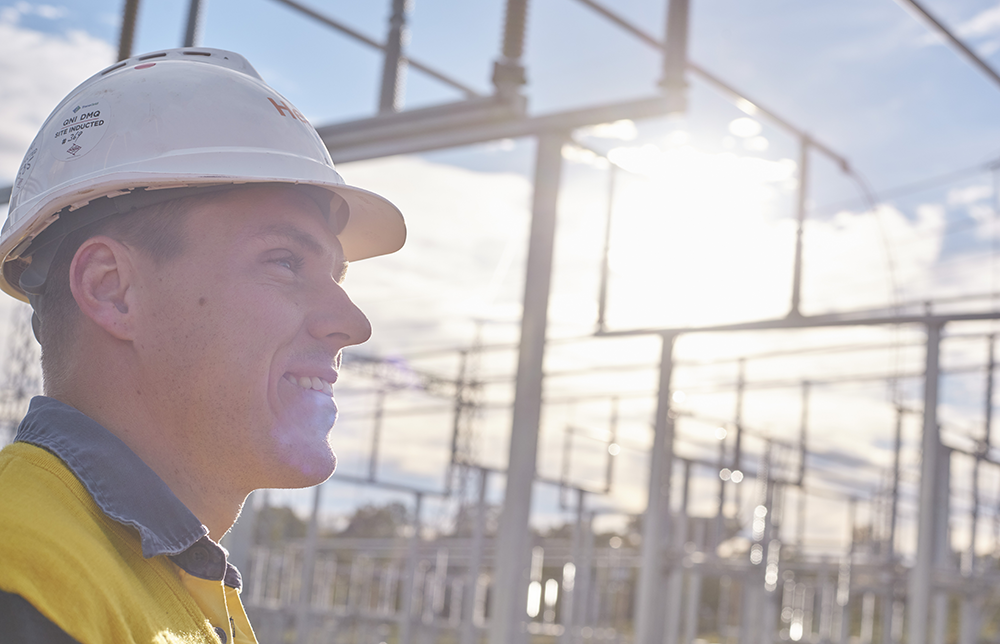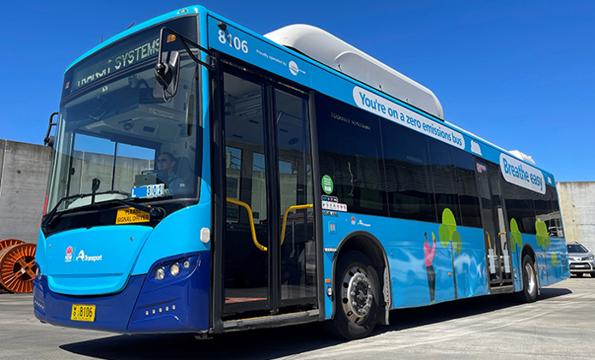The move to clean energy is a fait accompli. But how much existing infrastructure can we use to get us there, and is change happening fast enough to ensure the transition succeeds?
In late October 2021, the first grid scale battery in NSW was registered with the National Electricity Market meaning it could officially begin testing its world-leading technology.
The Wallgrove grid battery has a number of use cases, the crucial one being to provide inertia to keep the energy grid stable, something traditionally thought possible only from the spinning turbines of coal or gas plants, or from expensive stand-alone machines built solely for that purpose.
It’s just one example of tech-driven infrastructure that’s available right now, and ready to be tested at scale before being deployed to accelerate Australia’s transition to renewable energy. Smart Wires are another technological development, at prototype stage less than four years ago, that have since been piloted in NSW. They are now being deployed at scale to quickly and cost-effectively increase capacity of existing transmission connections between NSW and Victoria.
Smart Wires are important because they significantly increase the amount of electricity that can be carried on existing infrastructure. More capacity means more renewables can be connected without jeopardising grid reliability. Economics tells us that increased supply of any commodity also ultimately translates to lower prices for end users.
While not a silver bullet, these new technologies are examples of what happens when industry solves some of the critical challenges Australia has in scaling its energy transition.
But as the speed of change in the energy sector accelerates, investors are becoming more comfortable accepting new risk/reward profiles, and funding projects that don’t have an immediate ROI but do have a high likelihood of public benefit, and an expected ROI once more of the energy market has transitioned. Hyper-scale solar generation projects for export, as well as green hydrogen are just two examples of this.
While the Wallgrove Battery is pushing the boundaries of current grid-scale battery technology, the commercialisation curve and capacity growth for utility-scale batteries generally is predicted to be faster than either solar or wind has been, and both of these progressed at unexpectedly high rates. It demonstrates a willingness and eagerness of the sector to push hard to progress fast, as the economics and technological advances align.
Figuring out how to maximise usage, and rapidly scale existing technologies and solutions such as batteries, and a smart grid, is an acknowledged challenge for everyone in the energy sector. The answers will have real world impact on households, exporters, and manufacturers, as well as the broader economy.
But as the scale and speed of the transition becomes clearer, it’s also becoming increasingly recognised that care must be taken to ensure the change creates fair and equitable outcomes.
That means, for example, investigating all possible permutations on how energy can and should be transported from wherever it’s generated to wherever it’s used in a way that will also bring benefits to communities along the way.
Having the social license to operate in the energy industry is something companies, investors and government bodies must work hard to earn, because history tells us it cannot, and should not, be something that can simply be bought.
Existing data and direct experience show that renewable infrastructure projects have delivered incredible opportunities for regional areas, including direct job creation and improved transport and telecommunications infrastructure, as well as longer-term benefits that come from building sustainable economies.
It is now incumbent on the industry to better communicate how the transition is predicted to play out, and invest more time and energy into educating all stakeholders - particularly those directly affected - about the impacts and benefits expected along each step of the way.





